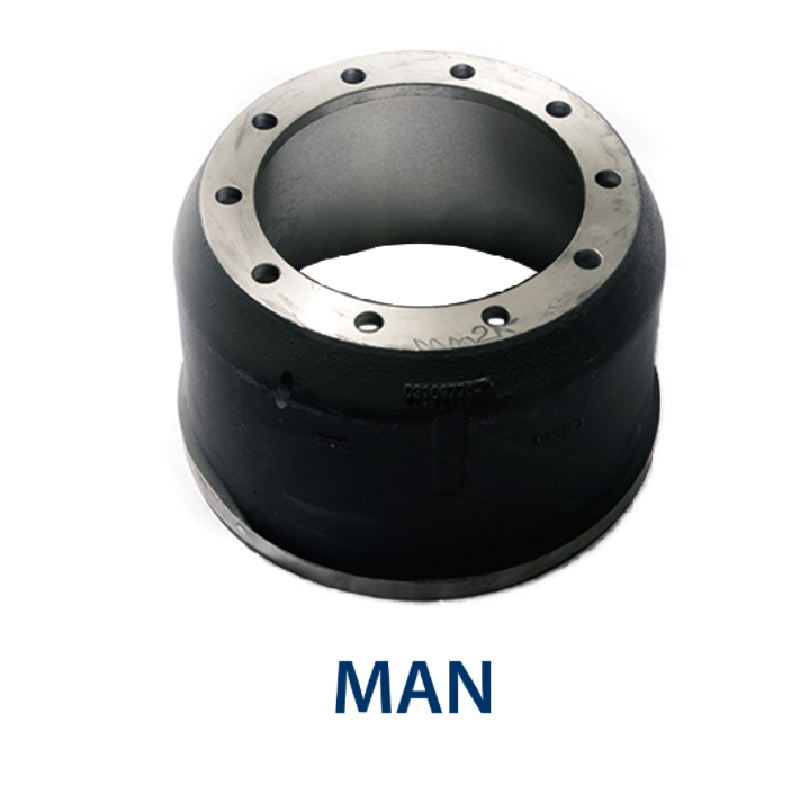Dec . 06, 2024 09:26 Back to list
Monitoring and Analyzing Brake Drum Temperature for Enhanced Safety and Performance
Understanding Brake Drum Temperature Importance and Implications
Brake systems are critical components of any vehicle, ensuring safety and reliability during operation. Among the various parts of a brake system, the brake drum plays a significant role, particularly in drum brake systems commonly used in lighter vehicles and certain heavy-duty applications. One vital aspect of brake drum performance is its temperature, often referred to as brake drum temperature, which can profoundly impact safety, performance, and longevity of the braking system.
The Basics of Brake Drum Operation
A brake drum is a cylindrical component that houses the brake shoes and is connected to the wheel hub. When the driver presses the brake pedal, hydraulic force pushes the brake shoes against the inner surface of the drum, creating friction that slows down or stops the vehicle. This friction generates heat, consequently increasing the brake drum temperature. Understanding how this temperature fluctuates during operation is crucial for optimizing brake performance and ensuring safety on the road.
Factors Influencing Brake Drum Temperature
Several factors can influence the temperature of a brake drum
1. Driving Conditions Frequent braking, especially in stop-and-go traffic or during hilly terrain driving, can lead to elevated brake temperatures. The more frequently brakes are applied, the more heat is generated.
2. Vehicle Type and Weight Heavier vehicles exert more force on the brakes, leading to higher temperatures during braking events. Trucks and buses often require more robust braking systems due to their weight and load capacity.
3. Brake Material The type of materials used in brake drums and shoes can affect heat dissipation. High-performance materials may withstand higher temperatures, whereas standard materials may degrade or warp under excessive heat.
4. Brake System Design The design and configuration of the braking system, including ventilation and cooling features, directly impact the ability to manage heat. Well-ventilated drums allow for better air circulation, helping to dissipate heat.
5. Driving Style Aggressive driving, including rapid acceleration and hard braking, can significantly elevate brake drum temperatures. In contrast, smooth and gradual braking minimizes heat generation.
brake drum temperature

Consequences of Elevated Brake Drum Temperature
High brake drum temperatures can lead to several issues
- Brake Fade This is a temporary reduction in braking power due to overheating. As the brake drums heat up, the friction material can become less effective, resulting in diminished braking performance. This is particularly dangerous in emergency situations.
- Warping Excessive heat can cause the brake drum to warp, leading to uneven contact with the brake shoes, vibrations, and further decreased effectiveness. Warped drums necessitate replacement, adding to maintenance costs.
- Component Failure Prolonged exposure to high temperatures can damage various components within the braking system, including the wheel bearings and seals, leading to costly repairs and potential safety hazards.
- Reduced Lifespan Consistently high temperatures can accelerate wear on brake components, shortening their lifespan and increasing the frequency of maintenance and replacement.
Monitoring Brake Drum Temperature
To mitigate the risks associated with high brake drum temperatures, monitoring systems have become increasingly popular. Techniques such as infrared thermography or thermocouples can provide real-time data on brake temperatures. Some advanced vehicles come equipped with built-in sensors that can alert drivers when temperatures exceed safe operating levels, allowing for proactive measures to be taken before issues arise.
Conclusion
Understanding and managing brake drum temperature is vital for ensuring vehicle safety and performance. By being aware of the factors that contribute to brake heating, drivers can adopt practices that minimize excessive temperatures, such as maintaining smoother driving habits and ensuring regular brake system inspections. With the right knowledge and preventative measures, the safety and efficiency of the vehicle's braking system can be preserved, ultimately leading to a safer driving experience. As brake technology continues to evolve, ongoing research into materials and cooling techniques promises further advancements in brake performance and safety, underscoring the importance of maintaining optimal brake drum temperature for all road users.
-
Volvo Brake Drum: OEM Quality, Optimal Safety
NewsAug.27,2025
-
Durable Brake Drum MAZ for Heavy Duty Trucks | High Performance
NewsAug.26,2025
-
FUWA: Premium Quality, Reliable Performance & Innovative Solutions
NewsAug.25,2025
-
Liza Brake Drum: Superior Quality & Performance for Safe Driving
NewsAug.24,2025
-
Iveco Brake Drum | Premium OE Quality for Daily & Eurocargo
NewsAug.22,2025
-
Your Brake Drum Man: Quality & Performance Parts
NewsAug.21,2025
